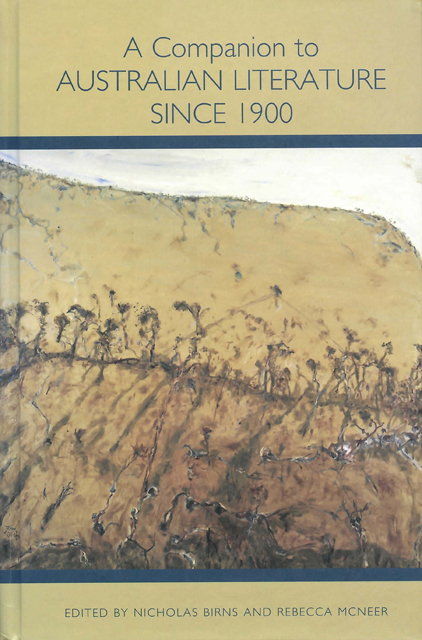Book contents
- Frontmatter
- Dedication
- Contents
- Chronology of Main Events in Australian History, 1901–2005
- Acknowledgments
- Note on the Cover Illustration and Artist
- Introduction
- Part 1 Identities
- Part 2 Writing Across Time
- Part 3 International Reputations
- Part 4 Writers and Regions
- Part 5 Beyond the Canon
- Notes on the Contributors
- Index
21 - Dorothy Hewett
Published online by Cambridge University Press: 10 March 2023
- Frontmatter
- Dedication
- Contents
- Chronology of Main Events in Australian History, 1901–2005
- Acknowledgments
- Note on the Cover Illustration and Artist
- Introduction
- Part 1 Identities
- Part 2 Writing Across Time
- Part 3 International Reputations
- Part 4 Writers and Regions
- Part 5 Beyond the Canon
- Notes on the Contributors
- Index
Summary
There is something more urgent here than metaphor.
— Sylvia Lawson, introductory essay to Hewett’s The Chapel Perilous.Born in Perth in 1923, Dorothy Hewett had become one of Australia’s best-loved and most respected writers by the time she died in 2002. Her sixty-year writing career spans the century and voices some of the most significant changes Australia witnessed during that period. Distinguished as a playwright, poet, and novelist, Hewett also won prizes for Wild Card, the first volume of her autobiography, published in 1991, and was awarded the Order of Australia for services to literature and a lifetime Emeritus Fellowship from the Literature Board of the Australia Council. The rich legacy of her work, across many genres and in response to much social change and reinvention, remains a source of ongoing critical debate, as well as fierce and abiding loyalty from readers and audiences.
With no single voice, nor an identifiably dominant literary character, her work nevertheless depends on a recurring topos of figures, metaphors, and imaginative landscapes that appear across forms and genres. A distinctive theatrical romanticism is often identified in her work, especially her theater and poetry, but that romanticism is of an idiosyncratic kind and much debated — undercut as it can be by a mordant and deadpan wit, whose butt often remains the author figure herself. A frank and questioning representation of sexuality and politics also abuts this romanticism. The critic Sylvia Lawson concludes her 1972 introductory essay to Hewett’s most famous play, The Chapel Perilous (first performed in 1971), by noting that “there is something more urgent here than metaphor” (xi). This “something more urgent” is the questing, critical edge of the play — then and now understood as a watershed moment for second-wave feminism in the theater, and a play that undid and made new the possibilities for a feminine subjectivity in an Australian imaginary. Hewett’s work combines a sense of questing urgency with a flamboyant use of myth and allegory, a frank sensuality, and a complex self-consciousness distinctive in Australian literature; a combination that produced works of abiding national significance.
- Type
- Chapter
- Information
- A Companion to Australian Literature since 1900 , pp. 321 - 334Publisher: Boydell & BrewerPrint publication year: 2010

